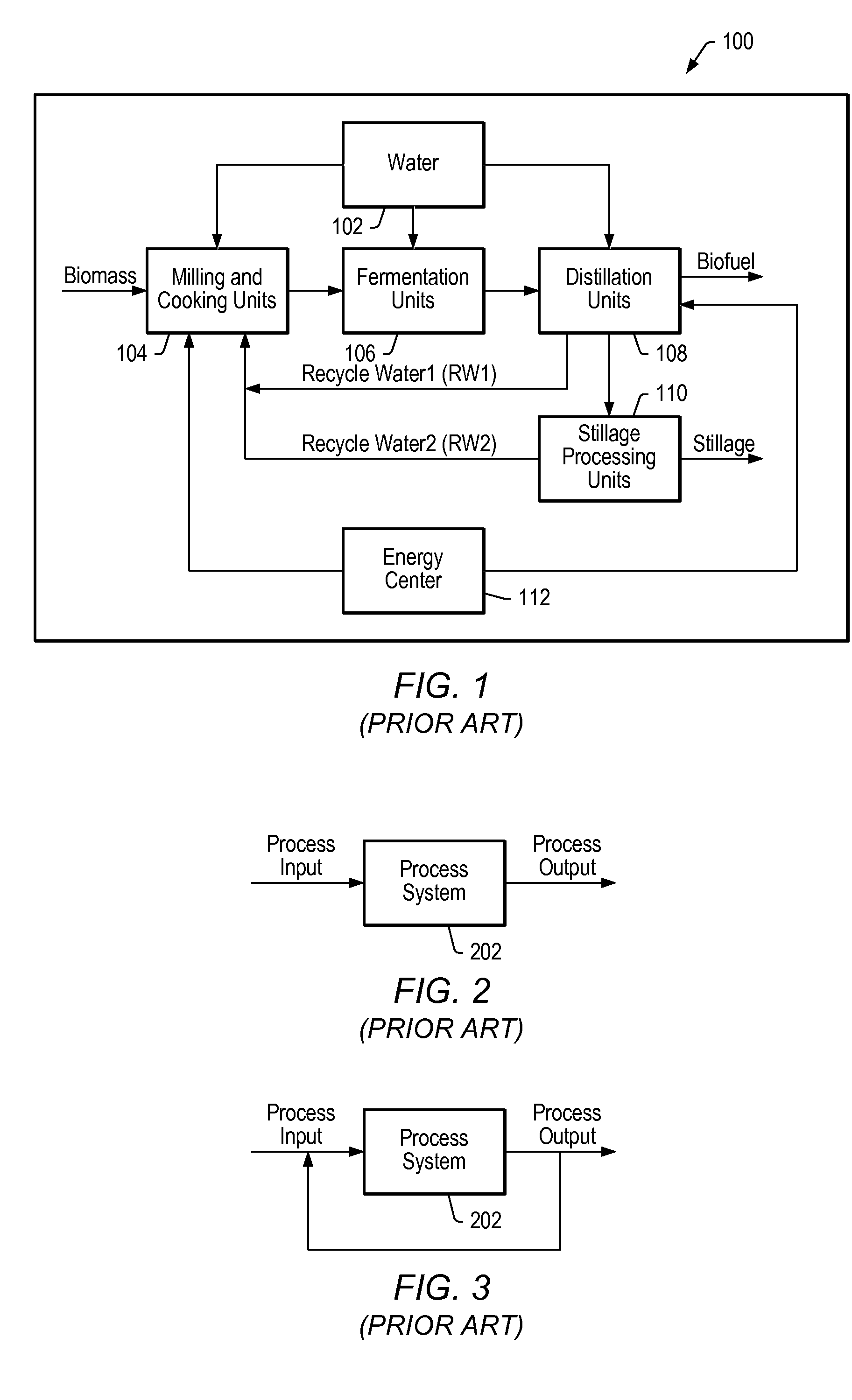Model predictive control of a fermentation feed in biofuel production
a biofuel and model technology, applied in adaptive control, sustainable manufacturing/processing, instruments, etc., can solve the problems of high plant failure rate, poor business judgment and inefficient engineering design, and 45% of the 163 existing commercial biofuel plants were operational
- Summary
- Abstract
- Description
- Claims
- Application Information
AI Technical Summary
Benefits of technology
Problems solved by technology
Method used
Image
Examples
Embodiment Construction
Definitions—Biofuel Production Processes
[0049]Biofuel—any fuel (or fuels) derived from biomass, i.e., from recently living organisms or their bi-products.
[0050]Biofuel production process—a fermentation process surrounded by auxiliary processing units to produce biofuel, other fermentable alcohols for fuel, and high-capacity food grade or chemical grade alcohols.
[0051]Biofuel production—a measure of biofuel production within or at the end of a production process. May include measurements such as concentration (e.g., wt. %, volume % or wt. / vol. %), volume (e.g., current gallons biofuel within a fermenter) or mass (e.g., current kg biofuel within a fermenter).
[0052]Batch processing—a staged discontinuous processing step that includes a start and an end, in contrast to continuous processing that continues without stop, e.g., during a normal operating day or week. Continuous processing is generally represented by fairly steady targets or operations, where at least some parameters change ...
PUM
 Login to View More
Login to View More Abstract
Description
Claims
Application Information
 Login to View More
Login to View More - R&D
- Intellectual Property
- Life Sciences
- Materials
- Tech Scout
- Unparalleled Data Quality
- Higher Quality Content
- 60% Fewer Hallucinations
Browse by: Latest US Patents, China's latest patents, Technical Efficacy Thesaurus, Application Domain, Technology Topic, Popular Technical Reports.
© 2025 PatSnap. All rights reserved.Legal|Privacy policy|Modern Slavery Act Transparency Statement|Sitemap|About US| Contact US: help@patsnap.com



